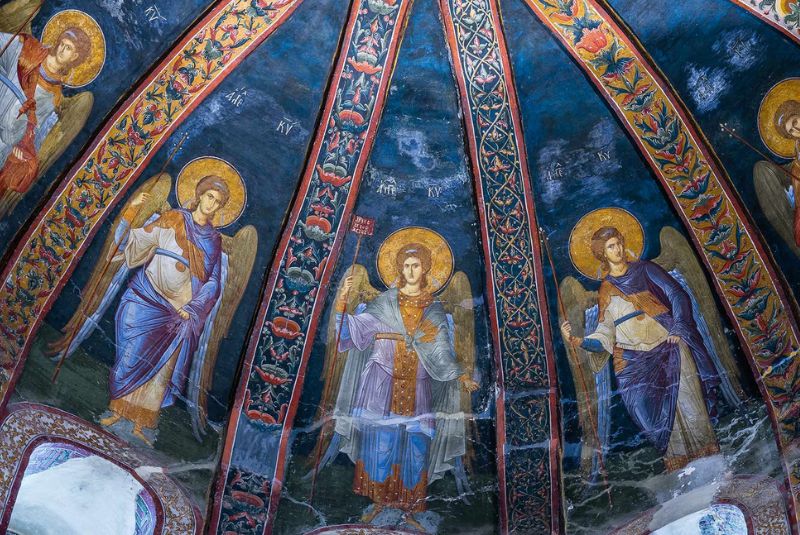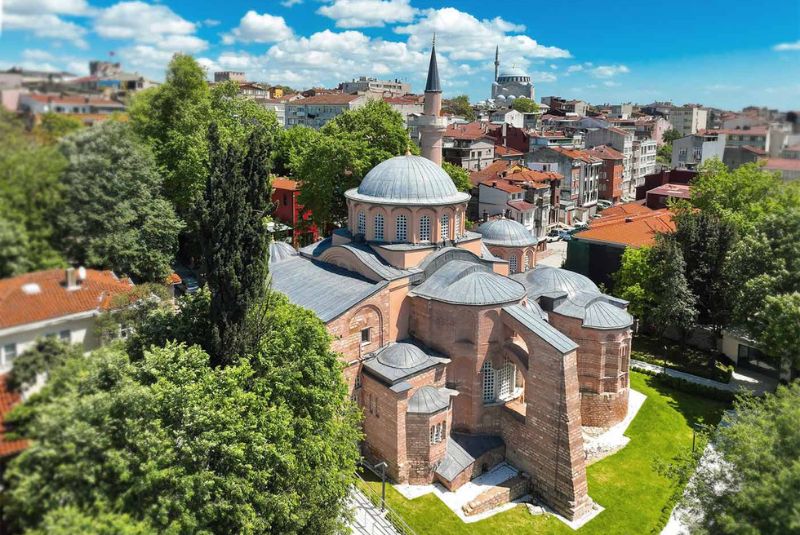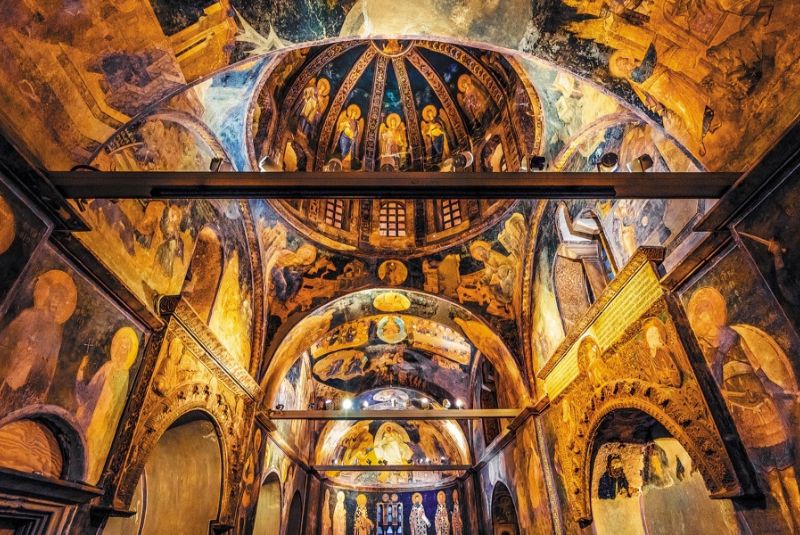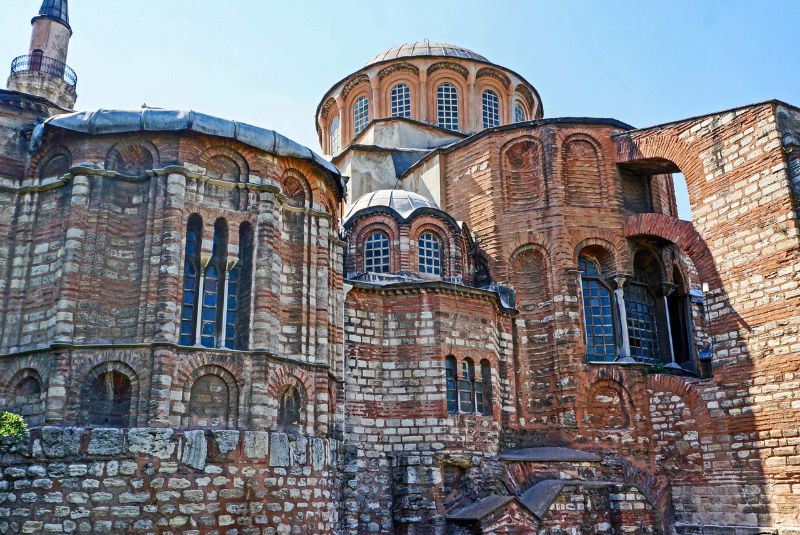Chora Church: A Jewel of Byzantine Art and History in Istanbul
The Chora Church, also known as the Kariye Mosque, stands as a testament to the rich and multifaceted history of Istanbul. Originally built as the Church of the Holy Saviour in Chora, this historical monument has undergone significant transformations over the centuries.
Nestled within the vibrant city of Istanbul, the Chora Church is renowned for its stunning mosaics and frescoes, which are considered some of the finest examples of Byzantine art. This blog will delve into the intricate details of the Chora Church, its history, architecture, and much more.
About Chora Church

Chora Church, now known as the Kariye Mosque, stands as a testament to Istanbul's rich cultural tapestry. Its name derives from the Greek word 'chora', meaning 'countryside', reflecting its initial location outside the walls of ancient Constantinople.
It was originally built in the early 5th century and served as a small monastery and chapel until it was rebuilt by Justinianus in the 6th century. Subsequently destroyed during the Latin invasion, it was restored by Andronikos II in the 14th century, adorned with exquisite mosaics and frescoes under Theodore Metochites.
Following the Ottoman conquest in 1453, it was repurposed as a mosque and named Kariye Camii. The vibrant mosaics and frescoes were covered due to Islamic tradition, preserving them over centuries until their rediscovery during a 20th-century restoration.
It was converted into a museum in 1945, and it reopened for worship in 2024. Today, visitors marvel at its Byzantine artistry, including intricate mosaics depicting biblical scenes and vibrant frescoes that narrate tales of Christian theology. Surrounding the mosque, the quaint Ottoman-era neighborhood offers a charming backdrop for exploring Istanbul's historical riches.
History of Chora Church in Istanbul

The first Church of the Holy Saviour in Chora was constructed during the reign of Emperor Justinian I (527-565) on the site of a former chapel. This chapel was initially located outside the first city walls of Constantinople but within the later Theodosian walls that still stand today. The term "Chora" means "countryside" in ancient Greek, reflecting its initial location outside the bustling city.
The Fourth Crusade and Reconstruction
During the Fourth Crusade (1204-1261), the church suffered significant damage when Western European invaders established the short-lived Latin Empire, causing a permanent rift between the Eastern Orthodox and Roman Catholic Churches. However, it was rebuilt and expanded in the 13th and 14th centuries. It was during this period that the church was adorned with the magnificent mosaics and frescoes that are admired today.
Ottoman Conversion and Modern Era
After the Ottoman conquest of Constantinople in 1453, the Chora Church continued to function as a Christian place of worship until 1511 when Vizier Hadim Ali Pasha converted it into a mosque.
The mosaics and frescoes were covered with plaster, paint, and dirt to comply with Islamic prohibitions against figural imagery in places of worship. In 1945, the Turkish government transformed the building into a museum, uncovering and restoring the hidden artwork. However, in 2020, it was reconverted into a mosque, with its mosaics and frescoes once again concealed during prayer times.
Architecture of Kariye Mosque in Istanbul

The Chora Church is a masterpiece of Byzantine architecture, showcasing intricate designs and artistic innovation.
Exterior
The exterior of the Chora Church is relatively modest, characterized by its brick construction and subtle detailing. The building's structure reflects the typical Byzantine style, with a central dome supported by four columns and flanked by smaller domes.
Interior
The true beauty of the Chora Church lies within its interior. The walls and ceilings are covered with exquisite mosaics and frescoes, which depict various biblical scenes.
Notable among them are the Cycle of the Life of the Virgin, depicting her journey from birth to marriage, and the Cycle of the Infancy of Christ, portraying his early life and travels.
The Cycle of Christ’s Ministry vividly illustrates miracles such as turning water into wine and multiplying loaves and fishes. Below is more details about the artwork:
The Cycle of the Life of the Virgin
Located on the north wall of the inner narthex, this cycle consists of 17 images illustrating the life of the Virgin Mary, including her birth, childhood, and marriage.
The Cycle of the Infancy of Christ
This cycle begins on the west wall of the outer narthex and narrates the early years of Jesus Christ, from his birth to his journey to Jerusalem for Passover.
The Cycle of the Christ's Ministry
Spread across the vaults, lunettes, and pendentives of the inner and outer narthexes, this cycle depicts the miracles performed by Jesus, such as healing a leper, turning water into wine, and multiplying loaves and fishes.
Best Time to Visit Chora Church

The best time to visit the Chora Church is during the spring (April to June) and autumn (September to November) months. During these periods, the weather is mild and pleasant, making it ideal for exploring Istanbul's historical sites. Additionally, visiting during weekdays and early morning hours can help you avoid the crowds and enjoy a more peaceful experience.
Chora Church Opening Hours

Starting from May 7, 2024, the Kariye Mosque (formerly Chora Church) is open to visitors from 9:00 AM to 5:00 PM. For worship purposes, it opens 30 minutes before prayer times and closes one hour after.
Chora Church Ticket Prices
Admission to the Kariye Mosque is free for all visitors. However, donations are appreciated to support the maintenance and preservation of this historical site.
Chora Church Location
The Chora Church is located in the Edirnekapı district of Fatih, Istanbul. Its address is Dervis Ali Neighborhood, Block 2607, Parcel 1. The church is situated close to the remains of the Theodosian Land Walls, making it a part of a rich historical area that includes various other landmarks.
How to Get to Chora Church

By Bus
From Eminönü, you can take the 38/E bus to Edirnekapı, which is a short walk from the Chora Church. This route provides a direct and convenient way to reach the site.
By Metro
For those coming from Taksim Square, taking the metro to the Golden Horn Metro Bridge and then walking from there is an option. The walk covers the districts of Cibali, Fener, Balat, and Ayvansaray, leading you to the Chora Church.
By Tram
The nearest tram station to the Chora Church is the Edirnekapı station on the T4 line. This station integrates seamlessly with other transportation lines, including the T1 tram line, M1A and M1B metro lines, M7 metro line, and the Metrobus (BRT) line.
By Taxi
A taxi ride is a convenient way to reach the Chora Church, especially if ordered by your hotel concierge. This method is preferable for those who wish to avoid the complexities of public transportation.
Chora Church Nearby Attractions

Theodosian Land Walls
A short walk from the Chora Church, the Theodosian Land Walls offer a glimpse into the ancient fortifications of Constantinople. You can climb the steps to enjoy a stunning view of the city.
Mihrimah Sultan Mosque
Designed by the renowned architect Mimar Sinan, the Mihrimah Sultan Mosque is located in Edirnekapı, just a short distance from the Chora Church. This 16th-century mosque is an architectural marvel and a serene place for contemplation.
Tekfur Palace Tile Museum
Recently opened to visitors, the Tekfur Palace Tile Museum showcases exquisite examples of Byzantine and Ottoman tilework. It is part of the Blachernae Palace complex and provides a fascinating insight into the artistic traditions of the era.
Kariye Hotel
Adjacent to the Chora Church, the Kariye Hotel offers a charming patio where you can enjoy Turkish tea or coffee. The hotel's patio previously hosted the famous Asitane Restaurant, known for its Ottoman cuisine, making it a great place to relax after your visit.
Tips for Visiting
- Dress Appropriately: As the Chora Church is now a functioning mosque, visitors are required to dress modestly. Women should cover their heads, and all visitors should cover their shoulders and knees.
- Respect Prayer Times: Visitors are not allowed inside the mosque during prayer times. Plan your visit accordingly to avoid any inconvenience.
- Photography: Flash photography and supplemental lighting are not permitted inside the mosque to protect the delicate mosaics and frescoes.
- Guided Tours: Consider hiring a guide or joining a tour to gain deeper insights into the history and significance of the Chora Church.
- Explore the Surroundings: After visiting the Chora Church, take some time to explore nearby attractions such as the Theodosian Land Walls, Mihrimah Sultan Mosque, and the Tekfur Palace Tile Museum.
Bottom Line
The Chora Church, now the Kariye Mosque, is a jewel of Byzantine art and architecture in Istanbul. Its rich history, stunning mosaics, and serene location make it a must-visit destination for anyone interested in the cultural heritage of this remarkable city.
Whether you are a history enthusiast, an art lover, or simply a curious traveler, the Chora Church offers a unique and unforgettable experience. Plan your visit carefully, respect the traditions of the site, and take the time to explore the surrounding historical attractions to make the most of your trip to Istanbul.
Share your story!
Comment below and let us know about your Experience.
Your story inspires others!
Comment
Leave a Comment